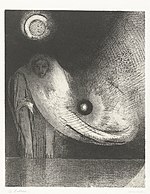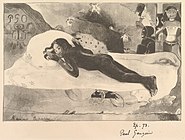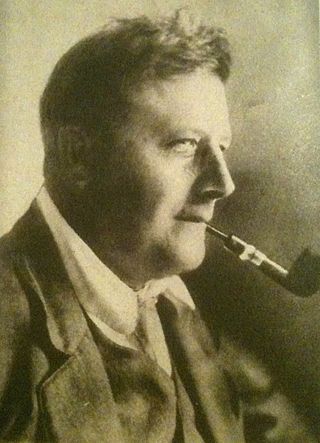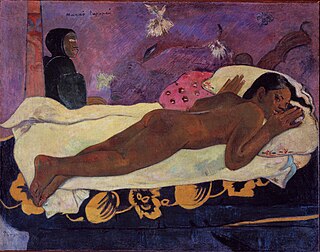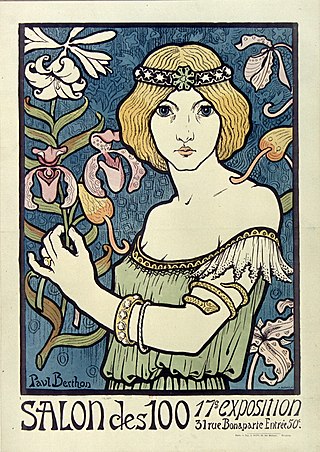
L'Estampe originale was a French periodical publishing portfolios of original prints in a limited edition of 100 for subscribers. It produced nine issues quarterly between 1893 and 1895, containing a total of 95 original prints by a very distinguished group of 74 artists, [1] including Henri de Toulouse-Lautrec, Gauguin, Renoir, Pissarro, Whistler, Paul Signac, Odilon Redon, Rodin, Henri Fantin-Latour, Félix Bracquemond, Félicien Rops and Puvis de Chavannes. Almost all of Les Nabis contributed: Pierre Bonnard, Maurice Denis, Paul Ranson, Édouard Vuillard, Ker-Xavier Roussel, Félix Vallotton, and Paul Sérusier. British artists included William Nicholson, Charles Ricketts, Walter Crane and William Rothenstein; besides Whistler, Joseph Pennell was the only American. [2]
Contents

Commentators at the time and subsequently have unanimously praised the success of the publisher, André Marty, in collecting a stellar group of artists, and in many cases getting them to produce some of their finest prints. Together the group display the main currents in the diverse and vibrant Parisian art scene of the period. After the Etching Revival beginning in the 1850s, France saw another wave of productivity in printmaking in the 1890s, with a great variety of techniques, subjects, and styles. [3]
L'Estampe originale has a notably large number of figure subjects compared with typical prints from earlier decades, but there are many landscapes and city views, traditional in style and not, and a wide range of other subjects. The rising influence of Art Nouveau is very apparent, but the more traditional styles of the Etching Revival are also well-represented. There is a great variety of printmaking techniques used, some of which would only have been possible in a relatively small edition of 100. [4] Of the prints, 60 were lithographs, 26 in the various intaglio techniques (with a third of these using colour), 7 woodcuts, a wood engraving and a gypsograph. A striking common factor is the high proportion using colour, in many different techniques, not just the lithographs. [5]

Each issue was printed in only 100 impressions. [6] The first eight issues each had ten loose prints in a paper cover or wrapper; the last was entitled Album de clôture ("Closing album") and the fourteen prints were between two paper-covered boards secured by two cream satin ribbons. [7] This was apparently intended to now hold all the previous issues as well, [8] and the title included a pun on "closure". Many buyers removed prints from the album to frame and hang, as had been anticipated. The prints were nearly all newly created for L'Estampe originale, had different sizes, and were often printed on different papers; indeed not all were by the same printer. They were signed and numbered, and the margins embossed with a small blind stamp, common to all the series. [9]





